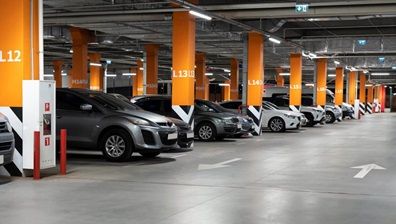The Sustainable Transport Forum (STF), under the leadership of the European Commission, has published guidance addressing fire safety risks associated with battery electric vehicles (BEVs) and recharging infrastructure in covered parking areas. The guidance document outlines best practices and recommendations for public authorities and private stakeholders.
It aims to ensure the safe deployment of BEVs by identifying existing and forthcoming legislation, examining fire safety challenges, and providing actionable safety measures.
The recommendations apply to local authorities, parking lot operators, designers, risk assessors, original equipment manufacturers (OEMs), and property owners involved in installing BEV recharging stations in both new and existing covered parking facilities.
The report highlights that BEVs do not inherently pose a greater fire risk than internal combustion engine vehicles (ICEVs), but fires involving lithium-ion batteries present unique challenges.
The primary risks associated with BEV fires include thermal runaway, jet fires, and vapor cloud explosions. The guidance document also notes that the condition and reliability of recharging infrastructure can contribute to fire hazards.
Fire safety concerns extend to human safety, firefighter intervention challenges, risks for parking operators and building owners, and potential environmental impacts. The guidance outlines various strategies to mitigate these risks.
The guidance presents fire safety measures in five key areas:
○ Prevention: Conducting fire risk assessments for new and existing parking structures.
○ Detection: Installing advanced fire detection systems to quickly identify fires involving BEVs.
○ Evacuation: Designing clear evacuation routes and positioning charging points away from emergency exits.
○ Propagation control: Using fire-resistant systems and compartmentalisation in parking structures to limit fire spread.
○ Firefighting: Ensuring firefighters have access to specialised equipment and training for BEV fire response.
The report provides specific recommendations for both public authorities and private entities involved in BEV infrastructure. For private stakeholders, such as parking operators and OEMs, the guidance recommends adhering to high safety standards when deploying BEV infrastructure, ensuring regular maintenance, and improving fire-resistant materials in parking designs.
For public authorities, it suggests establishing clear fire safety regulations, improving emergency response strategies, and ensuring that firefighters are trained in handling BEV fires. The guidance aligns with the EU’s broader decarbonisation goals, promoting the safe and widespread adoption of BEVs.








